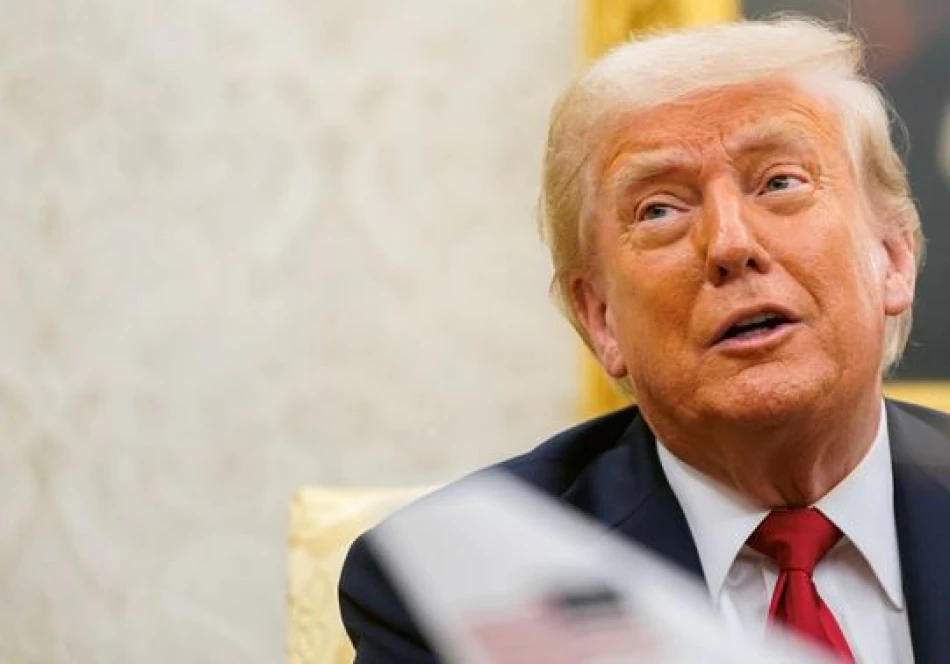
Trump 'Displeased' with Putin, Demands Ceasefire in Ukraine Within 50 Days
Trump Threatens 100% Tariffs on Russia Within 50 Days if Ukraine War Continues
President Donald Trump has issued his most concrete ultimatum yet to Moscow, threatening to impose "extremely high tariffs" of 100% on Russian goods if no peace agreement is reached to end the Ukraine war within 50 days. The threat, delivered during a White House meeting with NATO Secretary-General Mark Rutte, signals a dramatic escalation in economic pressure tactics while revealing Trump's growing frustration with Vladimir Putin's reluctance to negotiate.
A High-Stakes Economic Gambit
Trump's 50-day deadline represents a significant departure from traditional diplomatic timelines, compressing what would normally be months of negotiations into a narrow window. The proposed 100% tariffs would effectively double the cost of Russian imports, creating severe economic pressure on Moscow's already sanctions-battered economy.
Speaking to reporters in the Oval Office, Trump expressed his disappointment with Putin, stating he was "not pleased" with the Russian leader's approach to the conflict. This marks a notable shift in tone from Trump's previously more conciliatory rhetoric toward the Kremlin.
Strategic Implications for Global Trade
The tariff threat carries broader implications beyond the immediate Ukraine crisis. Secondary tariffs of this magnitude would likely trigger retaliatory measures from Russia, potentially disrupting global supply chains in energy, agricultural commodities, and raw materials where Russia remains a major supplier.
For international markets, the announcement introduces new uncertainty. European allies, already grappling with energy security concerns, would face additional pressure to reduce their remaining economic ties with Russia or risk being caught in escalating trade wars.
NATO's Role in the New Arms Strategy
Trump simultaneously outlined a restructured approach to military aid, proposing that the United States manufacture "first-class weapons" for NATO, with the alliance bearing the costs before distributing arms to Ukraine and other strategic locations.
This model represents a potential shift from direct bilateral military aid to a NATO-mediated system, potentially spreading financial burden among alliance members while maintaining American industrial leadership in defense manufacturing.
Economic Leverage vs. Military Support
The dual approach—economic punishment for Russia coupled with enhanced military support channeled through NATO—suggests Trump is attempting to balance his campaign promises to end the war quickly with the reality of entrenched positions on both sides.
By emphasizing that NATO will pay for American-made weapons, Trump addresses domestic concerns about military spending while maintaining pressure on European allies to increase their defense contributions.
Market and Geopolitical Consequences
The 50-day timeline creates immediate market volatility risks, as traders and investors must now price in the possibility of dramatically altered US-Russia trade relations. Sectors most vulnerable include energy, metals, and agricultural commodities, where Russian exports remain significant despite existing sanctions.
For Putin, the ultimatum presents a calculated risk assessment: whether the economic pain of additional tariffs outweighs the strategic and domestic political costs of appearing to capitulate to American pressure. The relatively short timeframe may actually work against negotiations, as it provides little room for the face-saving measures typically required in high-stakes diplomatic resolutions.
Trump's approach reflects a broader trend toward economic statecraft, where trade policy becomes a primary tool of foreign policy pressure. Whether this strategy proves more effective than traditional sanctions regimes will likely depend on Russia's economic resilience and the willingness of other major economies to coordinate similar measures.
 Sara Khaled
Sara Khaled







